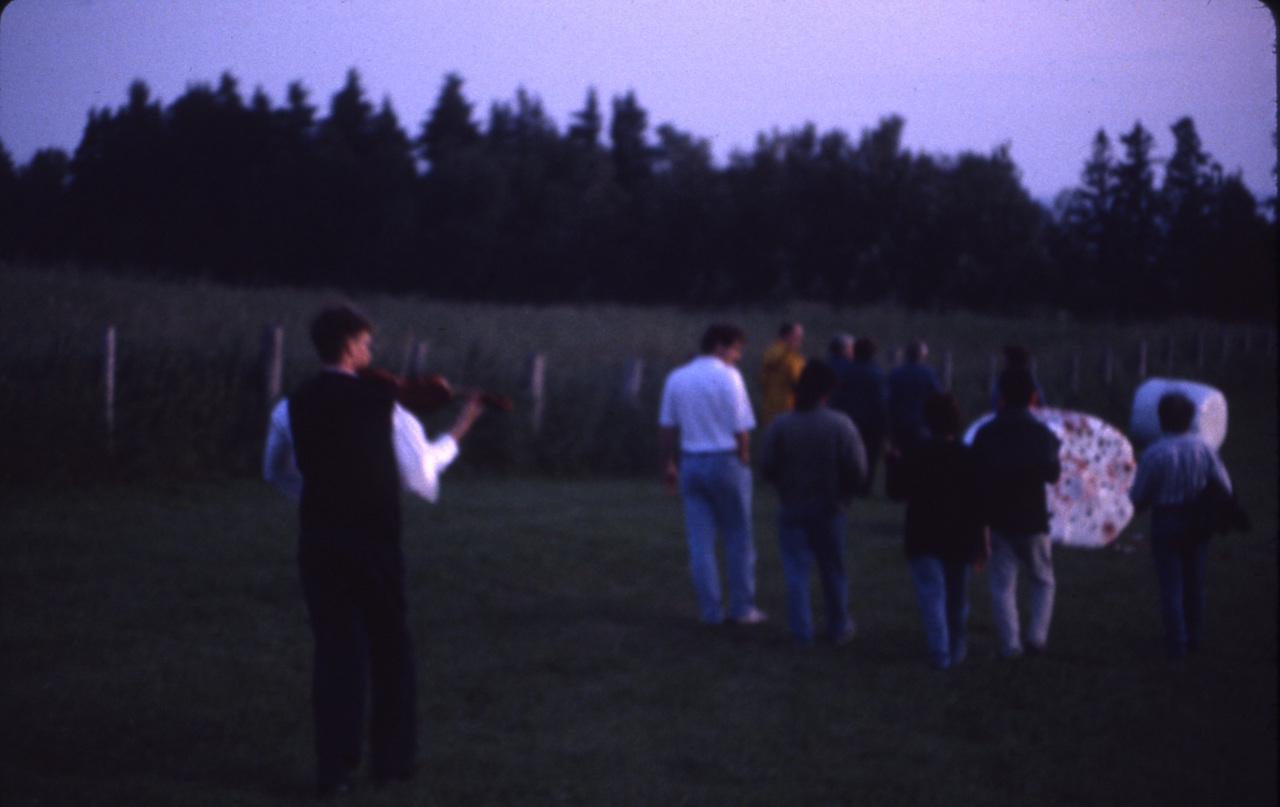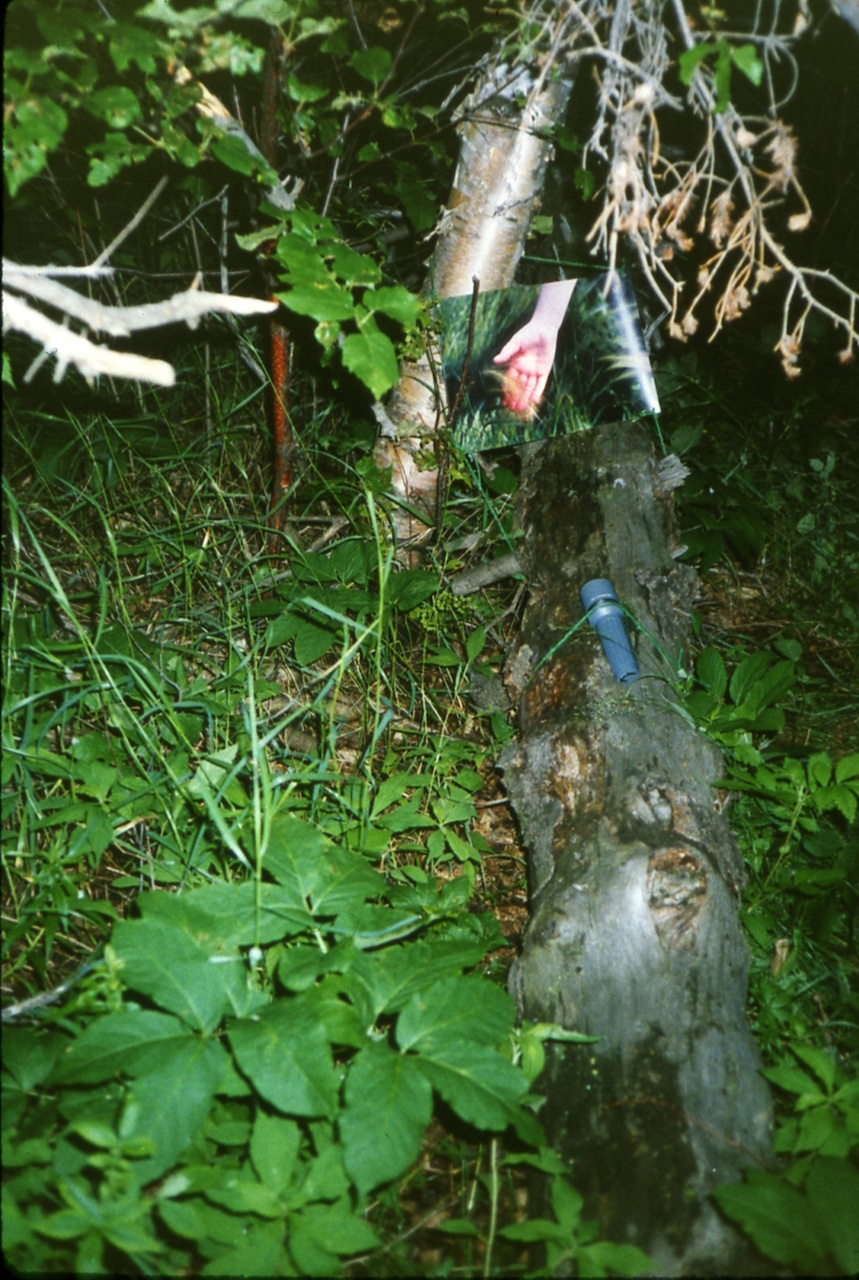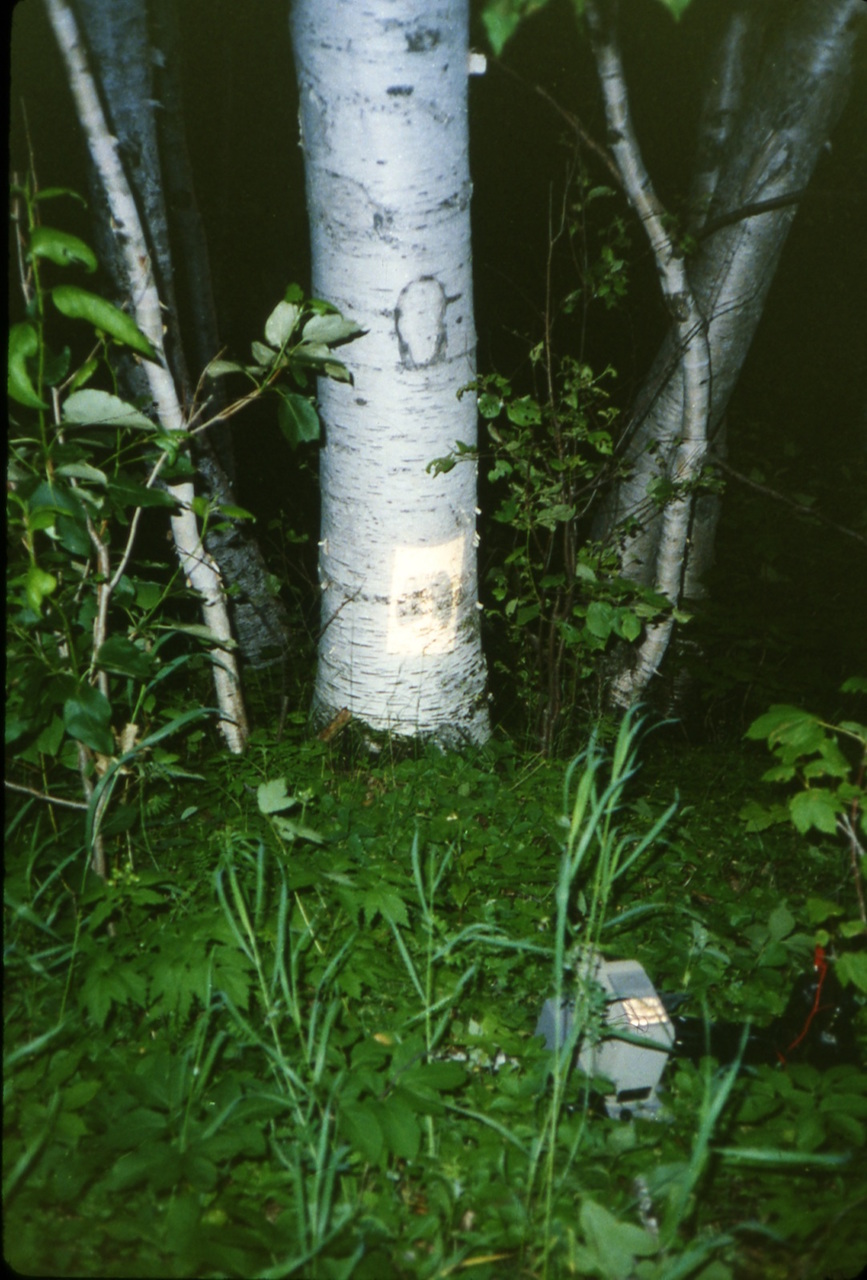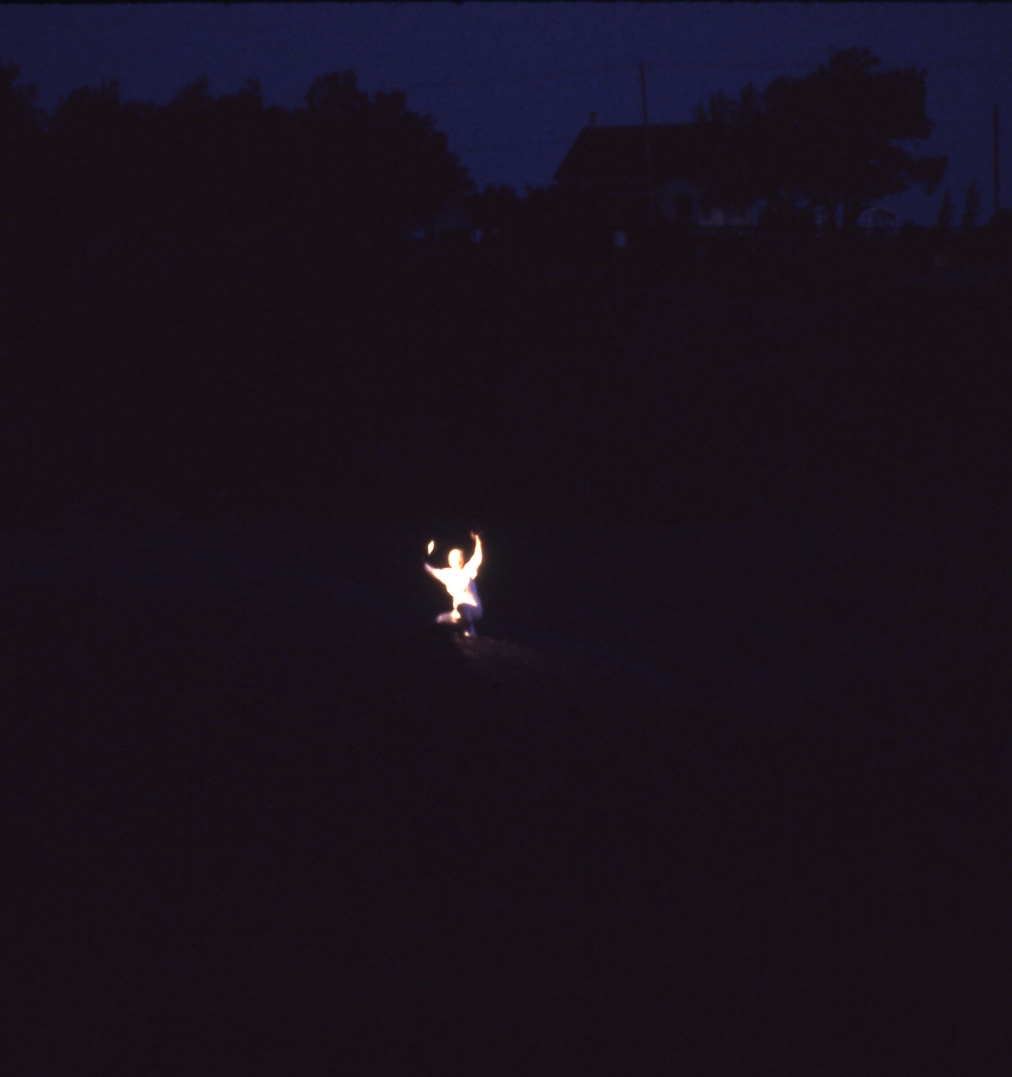Le Paysage et nos coeurs, 1994
approx. 35 minutes
part of Cuesta, artist exchange between Grimsby Public Art Gallery and La Biennale due dessin, de l’estampe et du papier
performance on the grounds and environs of Camp Musical du Lac-St-Jean
July 9, 1994
Métabetchouan, Québec
The performance took place in a site with three landscapes; pastoral, forest and industrial. These reflect the region’s culture in the broad sense of the term. It began at sunset which was approximately 8:30 p.m.
The pastoral aspect of the site was a mowed meadow fenced on both sides, adjacent to a farmer’s file, opening to the Camp’s picnic area at the Camp end and narrowing as it led to a woods. In it I placed 6 hay bales, which, as is the current practice in the region, were wrapped in white plastic. I invited the artists involved in the exchange to treat a hay bale in some way; my intention being to embody the spirit of the exchange. A black and white cow was also brought into the meadow. A large fire was burning in the firepit at the Camp end.
The performance began with a fiddler who played traditional jigs and reels of the region. He led the audience down the meadow and they were at leisure to view the hay bales. His promenade ended at the entrance to the forest part of the site.
The audience passed through an opening in the boundary fence. The first image presented to them in the forest was a 11″ x 17″ photocopy of a colour photograph of foxtail grass wrapped around a birch tree at this entrance. They walked along a narrow trail leading through the woods. Along the trail there are occasionally expansive vistas of the sunset and the landscape (the camp and woods are of higher altitude than the surrounding countryside). The second image was a slide projection of a 19th century drawing of a human heart and lungs which was projected near the base of a birch tree. The images that followed included a 16″ x 20″ lit transparency of a burdock leaf and other foliage on which was drawn a white line of the heart and lung shape. The rest were colour photocopies of photographs representing the 5 senses. These were close-ups of a small child’s relevant body parts (mouth, ear, nose, eyes, hand) against a background of foxtail grass. These were placed in and under trees of interesting shapes and lit by flashlight. The images were photographed in Niagara and so brought Niagara plants into the Lac-St-Jean landscape. (Burdock, an important healing plant, is in fact found in both regions.) The trail was marked by gold-painted arrows and audience members moved through this section at their own speed. The trail ended in a clearing from which there was a view of the sunset and a gravel pit, the industrial aspect of the site.
The summit of the tallest gravel hill was just slightly below the clearing in height and a few hundred feet across from it. I was waiting for the audience in a hidden location in the gravel pit dressed in white pants and shirt. In the audience, a tiny cymbal sounded and at this cue I emerged and walked across a flat expanse of approximately 100 feet to the summit of the gravel pit. I faced the audience and sounded a resonant ‘o’ tone which changed to an ‘ah’ as I dropped to the ground and rolled half way down the gravel hill (to the end of the visibility point). I danced up the hill. The movement was of gestures to the earth, my heart and the sky and lateral reaches. When I reached the top again, I switched on a halogen lamp. In the light I picked up a golden bow and fired 3 arrows to my left side. I then picked up the lamp and a golden bell which I rang furiously in the light. I placed the bell down, switched off the lamp and walked back to my original hidden spot. Darkness had fallen during these actions.
The audience returned through the forest, aided by flashlights. They returned to the burning fire and to the cow. A slide of an older factory in Alma was projected on the cow. Refreshments were available and the audience stayed for some time.
Le Paysage et nos coeurs expresses a notion of the identity of the human body within nature. This is intended as a contrasting point of view to the dominant view of our society which places humanity and nature in conflict. The work also rests in a point of view that celebrates regional identity, which I intend as a response to the globalization of corporate, commercial culture.
I view the live action part of the work as an offering to the earth in awareness of our aggressions against her. The cymbal and bell are Tibetan and are used in Buddhist spiritual practice. My use of the bell is meant to represent an awakening to our senses of our degradation of the earth. It is of interest to me also that in Tibetan Buddhist mythology there is a goddess who rings a bell to subdue aggression and anger. The dance up the hill uses as its source a Seneca medicine dance. Both of these sources are part of my personal spiritual practice.
Elizabeth Chitty
Jordan, Ontario
August 13, 1994
part of a a Quebec/Ontario artist exchange, first titled Cuesta then Terre Commune/Common Ground presented by Grimsby Public Art Gallery and La Biennale du dessin de l’estape et du papier du Quebec,
Curators: Mary Rashleigh (Grimsby Public Art Gallery), Bernard Pilote (Alma)
Artists: Guy Blackburn, Elizabeth Chitty, Claudien Cotton, Martin Dufrasne, Reinhard Reitzenstein, Ronald Thibert, Yves Tremblay, Gayle Young
References:
The Grimsby Public Art Gallery newsletter, July/August 1994
The Grimsby Public Art Gallery newsletter, July/August 1996
“Common Cause”, A. Baillie, The St. Catharines Standard, August 2, 1996
Cuesta O, G. Blackburn, C. Cotton, R. Thibert, Y. Tremblay, Etiquette Zero, Chicoutimi,1996
“De Cuesta à la Terre Commune Common Ground”. Guy Sioui Durand. Inter art actuel. numéro 67. Québec 1997. 12.
Terre Commune/Common Ground, CD ROM QuickTime 3.0, Galerie Sequence and Grimsby Public Art Gallery, 1998
Nature of the Body, the installation and the performance, were also created for Terre Commune/ Common Ground.





